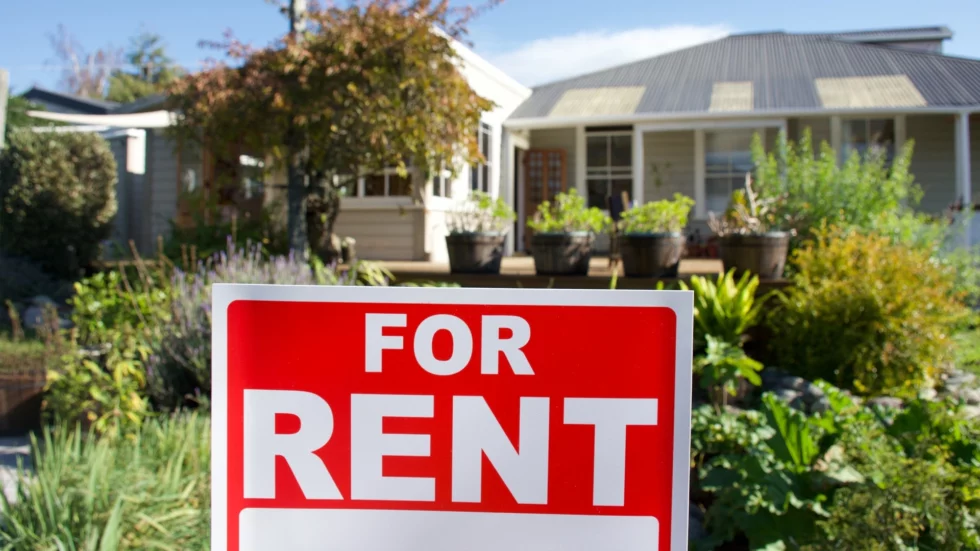Features > Property News & Insights > Housing Trends
Rent Pain: Affordable Markets Becoming Expensive for Australian Renters

CoreLogic released their quarterly rental review this week, showing that affordable housing options are becoming increasingly limited for Australian renters.
The report highlights the closing gap between the cost of renting a house and the cost of renting an apartment.
Growth in rents has been strongest in the unit market, with renters opting for the more affordable alternative, but the affordability factor is quickly fading, with the median house rent only $34 more than the median unit rent.
The preference for apartments goes much further than affordability however, with unit blocks in high demand for their convenient location in most cases.
The price gap between unit and house rents has almost halved since December 2021, when it was $62, due to unprecedented demand in the unit sector, and record low vacancy rates.
The three months to May saw the unit sector clock peak quarterly growth, with rents increasing 4.4 percent. June continued to see strong rental growth, albeit at a slightly softer rate of 3.6 percent.
The quick movement in rents has also resulted in some locations losing their affordability reputation, like Melbourne.
The city has long been regarded as an affordable rental market, but after chasing Sydney’s rent growth, and increasing 12.6 percent in the past 12 months alone, it no longer stands as our cheapest option.
“The typical rent for units in Melbourne, Brisbane, and Perth have all risen by more than $70 p/w over the past year, while Sydney unit rents, up 18.8 percent over the year, are almost $110 p/w more expensive,” read the CoreLogic report.
The rise in rents comes as a dire supply shortage plagues markets nationwide, with record low vacancy rates across the board. Melbourne’s vacancy rate fell from 1.7 percent 12 months ago, down to just 0.8 percent in June 2023.
Melbourne’s new median rent is now $551, up from $481 just last year.
The supply shortage in the city is one of increasing concern, especially as the Victorian government announced the introduction of new land taxes for investors earlier this year.
Experts warned that this could culminate in higher rents and lower supply, as inexperienced investors take taxes as a deterrent to enter the market.
And perhaps Melbourne’s increasing costs of renting are early symptoms of this.
Real Estate Institute of Victoria CEO, Quentin Killian, said that market interventions like the land tax and rent caps can exacerbate supply issues, and wreak havoc on housing affordability.
“Despite popular opinion, 70 percent of Victorian property investors only own one rental property, with 43 percent of that group earning under $100,000 p.a. according to the ATO, so these investment properties represent the future financial planning of everyday Victorian families,” said Mr Killian.
“If rent is capped and cannot move with the market, investors are unable to respond to cost movements such as increasing interest rates, maintenance etc.
“They are very likely to take their hard-earned savings elsewhere, which is what we are already seeing as a response to the increases in Land Tax.”
Wide-spread increases shuffle affordable markets
The rent rises aren’t limited to Melbourne however. Perth and Adelaide also rose substantially over the quarter, notching 3.4 percent and 2.5 percent growth respectively.
Despite strong growth, Adelaide claimed the title as the most affordable rental market, but it’s likely Hobart will steal that title, if Adelaide continues to grow and Hobart continues to decline.
Despite the title of affordability, Adelaide’s median rent is now $549 a week – up a whopping 9.6 percent in the last 12 months.
It represents a deteriorating situation for renters nationally, as demand continues to far outstrip supply, and costs begin to seriously weigh on weekly budgets.
An impending migration boom will also add to this in the coming months, highlighting the need for the government to prioritise housing before the housing crisis culminates into a homelessness crisis.
Stay Up to Date
with the Latest Australian Property News, Insights & Education.




.png?width=292&height=292&name=Copy%20Link%20(1).png)
 SIGN UP FOR FREE NEWSLETTER
SIGN UP FOR FREE NEWSLETTER








.jpg?width=1920&height=1080&name=Warning%2c%20You%20Might%20Be%20Facing%20Higher%20Taxes%20Soon%20(1).jpg)





.png?width=1920&height=1080&name=Rate%20Drops%20Signal%20BIGGEST%20Property%20Boom%20in%20DECADES%20(1).png)

.jpg?width=1920&height=1080&name=Labor%20vs%20Liberal%20These%20Housing%20Policies%20Could%20Change%20the%20Property%20Market%20Forever%20(1).jpg)
.jpg?width=1920&height=1080&name=QLD%20Slashes%20Stamp%20Duty%20Big%20News%20for%20Investors%20%26%20Home%20Buyers%20(1).jpg)
.jpg?width=1920&height=1080&name=Trump%20Just%20Slapped%20Tariffs%20%E2%80%93%20Here%E2%80%99s%20What%20It%20Means%20for%20Australia%20(1).jpg)
.jpg?width=1920&height=1080&name=Federal%20Budget%202025%20More%20Debt%2c%20No%20Housing%20%E2%80%93%20Here%E2%80%99s%20What%20You%20Need%20to%20Know%20(1).jpg)
.jpg?width=1920&height=1080&name=Australias%20Housing%20Crisis%20is%20about%20to%20get%20MUCH%20Worse%20(New%20Data%20Warns).jpg)
%20(1).jpg?width=1920&height=1080&name=Australias%20RENTAL%20CRISIS%20Hits%20ROCK%20BOTTOM!%20(2025%20Update)%20(1).jpg)
%20(1).png?width=1920&height=1080&name=Is%20Adelaide%20Still%20a%20Good%20Property%20Investment%20(2025%20UPDATE)%20(1).png)
.jpg?width=1920&height=1080&name=RBA%20Shocks%20with%20Rate%20Cuts!%20What%E2%80%99s%20Next%20for%20Property%20Investors%20(1).jpg)
%20(1).jpg?width=1920&height=1080&name=I%20Predict%20The%20Feb%20Rate%20Cut%20(My%20Price%20Growth%20Prediction)%20(1).jpg)
.png?width=1920&height=1080&name=Why%20Property%20Prices%20Will%20Rise%20in%202025%20Market%20Predictions%20(1).png)
.jpg?width=1920&height=1080&name=Why%20Investors%20Are%20Choosing%20Apartments%20Over%20Houses%202%20(1).jpg)
.jpg?width=1920&height=1080&name=Why%20Rate%20Cuts%20Will%20Trigger%20A%20Property%20Boom%20(1).jpg)
.jpg?width=1920&height=1080&name=Retire%20On%202Million%20With%20One%20Property%20(Using%20SMSF).jpg)
.jpg?width=1920&height=1080&name=4%20Reasons%20Why%20You%20Should%20Invest%20in%20Melbourne%20Now%20(1).jpg)
%20(1).jpg?width=1920&height=1080&name=Old%20Property%20vs%20New%20Property%20(Facts%20and%20Figures%20Revealed)%20(1).jpg)
%20(1).jpg?width=1920&height=1080&name=Will%20The%20New%20QLD%20Govt%20Create%20a%20Property%20Boom%20or%20Bust%20(My%20Prediction)%20(1).jpg)
%20Scott%20Kuru%20(1).jpg?width=1920&height=1080&name=Inflation%20Hits%20Three-Year%20Low%20(Will%20RBA%20Cut%20Rates%20Soon)%20Scott%20Kuru%20(1).jpg)
.jpg?width=1920&height=1080&name=How%20to%20Buy%20Investment%20Property%20Through%20SMSF_%20The%20Ultimate%20Guide%20(1).jpg)
.jpg?width=1920&height=1080&name=Victoria%20Slashes%20Stamp%20Duty%20Melbourne%20Set%20to%20Boom%20Scott%20Kuru%20(1).jpg)
.png?width=1571&height=861&name=Are%20Foreign%20Buyers%20Really%20Driving%20Up%20Australian%20Property%20Prices%20(1).png)
.jpg?width=1920&height=1080&name=The%20Single%20Factor%20That%20Predicts%20Property%20Growth%20Regions%20(1).jpg)
%20Scott%20Kuru%20(1).jpg?width=1920&height=1080&name=My%20Prediction%20On%20Rates%20%26%20Negative%20Gearing%20(Market%20Crash)%20Scott%20Kuru%20(1).jpg)

-1.png?width=1920&height=1080&name=Major%20Banks%20Cut%20Rates%20Will%20RBA%20Follow%20Suit%20(Sept%20Rate%20Update)-1.png)
%20Scott%20Kuru-1.png?width=1920&height=1080&name=Rate%20Cut%20Coming%20What%20New%20Zealands%20Move%20Means%20for%20Australia%20(Sept%20Prediction)%20Scott%20Kuru-1.png)
%20(1).jpg?width=1920&height=1080&name=Buy%20when%20the%20interest%20rates%20are%20high!%20(Why%20you%20must%20buy%20now!)%20(1).jpg)
.jpg?width=1920&height=1080&name=Carms_Revised%20Taxes%20Due%20Aug%209%20YT%20Thumbnail02%20(1).jpg)
.jpg?width=1920&height=1080&name=Carms_Too%20Little%20Too%20Late%20Aug%207%20YT%20Thumbnail01%20(1).jpg)









.jpg?width=1920&height=1080&name=Carms_Rate%20Drop%20In%20July%20Jun%2010%20YT%20Thumbnail02%20(1).jpg)
.jpg?width=1920&height=1080&name=Carms_Own%20a%20Property%20V6%20Jun%205_YT%20Thumbnail%20(1).jpg)









.png?width=1920&height=1080&name=Artboard%201%20(3).png)






.jpg?width=1920&height=1080&name=YT%20thumbnail%20%20(1).jpg)

